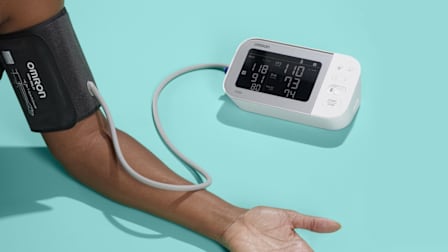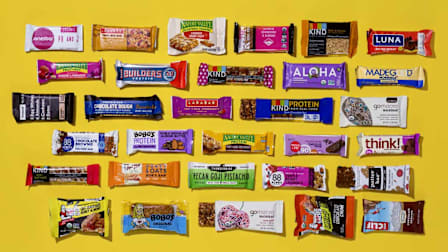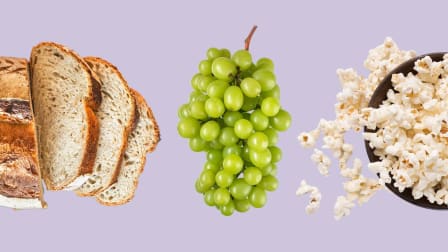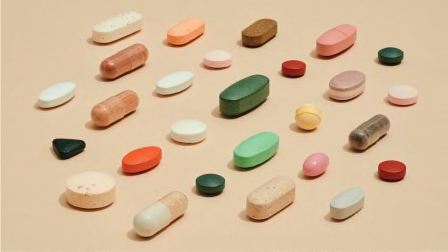Foods to Eat for a Heart-Healthy Diet
Medication can help you lower your blood pressure and cholesterol. But what you eat also matters.
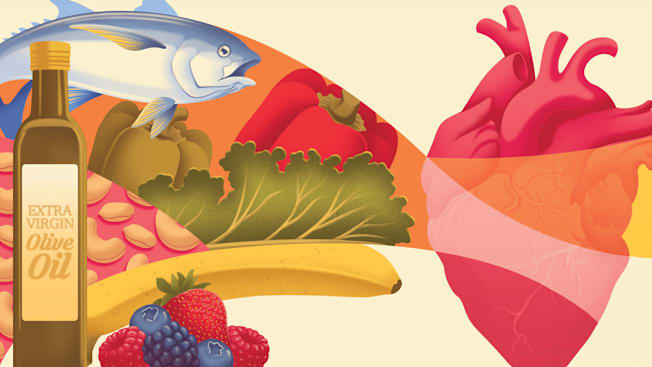
Millions of Americans take medicine for high blood pressure and cholesterol. While drugs can be an important part of managing heart health, they aren’t a substitute for a healthy diet, says Maya Vadiveloo, RD, chair-elect of the nutrition committee of the American Heart Association’s Council on Lifestyle and Cardiometabolic Health.
“Diet is the No. 1 risk factor for heart disease,” Vadiveloo says. Diets high in sodium and saturated fat and low in fiber are the biggest contributors to deaths from heart disease, according to a 2020 study in European Heart Journal. The analysis of nearly three decades of data found that a better diet could have prevented 69 percent of those deaths. By comparison, lowering blood pressure would prevent 54 percent of deaths and lowering cholesterol, 42 percent.
What Food Can Do
Heart health is multifaceted. Although statins and high blood pressure drugs are highly effective, they target just those risk factors. “A pill can’t capture the complexity of food and the interaction of nutrients,” Vadiveloo says. What you eat can simultaneously control cholesterol, blood pressure, inflammation, weight, and even gut health, which research suggests is tied to cardiovascular disease. About half of Americans have one of these conditions, and many have more than one.
Combat Major Risk Factors with Food
Many of the foods that follow are multitaskers. For example, they may have cholesterol-lowering fiber, antioxidants that fight inflammation, and minerals that reduce blood pressure. But some foods are particularly powerful at controlling certain risk factors.
Improve cholesterol
Your body needs cholesterol, a fatlike substance, to build cells. But too much LDL or “bad” cholesterol causes plaque buildup in your arteries. These foods help you make less LDL or remove more LDL cholesterol from the body.
Olive oil: Saturated fat, found in butter, lard, and meat, drives up bad LDL cholesterol. Instead, cook with unsaturated oils, like avocado, canola, and especially extra-virgin olive oil. In addition to healthy fats, it contains antioxidants.
Beans: They contain soluble fiber, which lowers cholesterol. More than 90 percent of Americans don’t get enough fiber in their diets, so in addition to beans, eat plenty of other foods high in soluble fiber, like apples, pears, oats, carrots, and peas.
Nuts: Some research shows that eating nuts regularly lowers LDL cholesterol levels by as much as 16 percent. They not only deliver fiber and healthy fats but also pack in heart-healthy vitamins and minerals, such as vitamin E and magnesium. Add them to your snack or toss a handful in a salad, yogurt, and cereal.
Ease inflammation
Though inflammation is your body’s first line of defense against injury and infection, chronic inflammation can raise the risk for heart disease. Experts are still studying the connection, but they think inflammation worsens plaque buildup in blood vessels.
Fatty fish: Eating two servings of fish each week lowers the risk of cardiovascular disease by about 8 percent, according to a 2023 study in the journal Nutrients. Fish contains omega-3s, which are anti-inflammatory. Not a seafood fan? Walnuts and seeds like flax and chia are plant-based sources of this healthy fat.
Peppers: Whether you like peppers sweet or spicy, they’re high in vitamin C, an antioxidant shown to lower markers of inflammation in the body. Plus, hot peppers have capsaicin, another anti-inflammatory ingredient.
Berries: These fruits are rich in polyphenol antioxidants, which combat inflammation and relax blood vessels. Berries are also a good source of fiber. Frozen berries are just as nutritious as fresh, so keep a bag in the freezer and add them to oatmeal, smoothies, and yogurt.
Lower blood pressure
When you have high blood pressure, the force of your blood flow is too high. This requires the heart to work harder and, over time, may damage the lining of blood vessels, which can cause them to narrow and become less elastic. These foods may help relax blood vessels and improve blood flow.
Spices and herbs: Seasoning food with about a teaspoon of herbs and spices a day lowers blood pressure after a month, a study from Penn State University found. (The study was funded in part by McCormick.) Plus, using herbs and spices makes cutting back on blood-pressure-raising salt easier because they add flavor to food. Complex and robust herbs and spices like basil, ginger, and black pepper in particular stimulate your taste buds.
Beets: They contain nitrates, chemicals that your body converts into a gas called nitric oxide. (Nitrates in vegetables don’t easily convert to compounds that may cause cancer the way the ones in processed meats do.) Nitric oxide relaxes blood vessels, increasing blood flow and lowering blood pressure. In 2021, Danish researchers found that people who ate a cup of nitrate-rich veggies, such as beets, daily had lower blood pressure readings and a 15 percent lower risk of cardiovascular disease than those who ate less.
Leafy greens: A cup of cooked spinach offers 18 percent of the daily value for potassium (4,700 mg). A cup of cooked Swiss chard has 20 percent of the daily value. This mineral helps your body excrete sodium and relaxes blood vessels. Other potassium-rich foods include beet greens, bok choy, lentils, bananas, acorn squash, potatoes, salmon, and yogurt.
Daily Moves to Boost Heart Health
About 80 percent of heart disease cases are preventable with good lifestyle habits. Regular exercise, not smoking, and managing stress are some of the biggest changes you can make, but these tweaks can also help.
Laugh frequently. It eases stress and helps blood vessel function. In a 2015 study in the Journal of Epidemiology, people who laughed a lot were less likely to get heart disease than those who rarely did. So go ahead: Watch a silly cat video or crack jokes with your family.
Stand up more often. In a 2022 study in JAMA Cardiology, sitting for 8 or more hours a day raised the risk for major cardiovascular disease by 21 percent. Try standing up while taking a call, or break up your day with quick walks.
Try isometrics. Moves like planks or wall sits involve holding the body in one position. The muscles tighten and blood flow decreases. Afterward, the return of blood flow relaxes your vessels, lowering blood pressure, according to a review of studies published in 2023 in the British Journal of Sports Medicine.
Run an air purifier. Air pollution can increase the chances of developing heart disease. Using an air purifier can help filter out some of the small particles that may damage blood vessels.
Editor’s Note: This article also appeared in the August 2024 issue of Consumer Reports On Health.

















